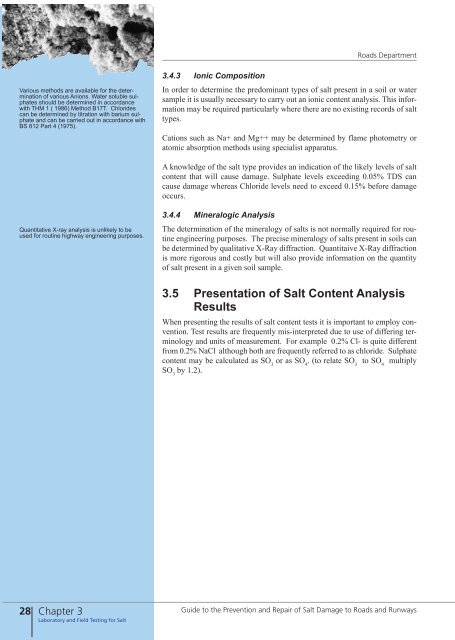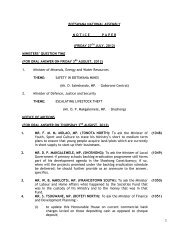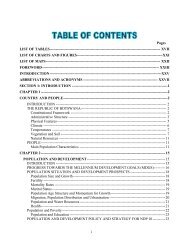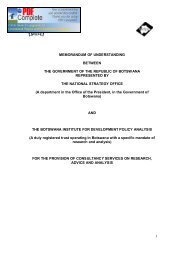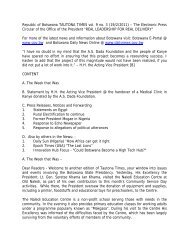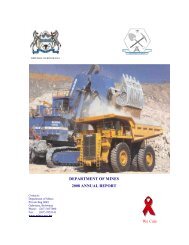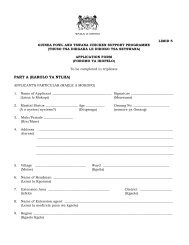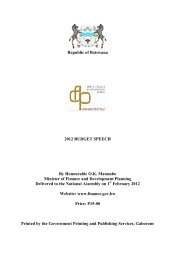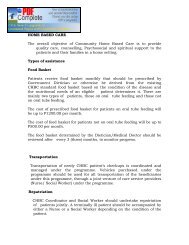Roads Department - Government of Botswana
Roads Department - Government of Botswana
Roads Department - Government of Botswana
You also want an ePaper? Increase the reach of your titles
YUMPU automatically turns print PDFs into web optimized ePapers that Google loves.
<strong>Roads</strong> <strong>Department</strong><br />
Various methods are available for the determination<br />
<strong>of</strong> various Anions. Water soluble sulphates<br />
should be determined in accordance<br />
with THM 1 ( 1986) Method B17T. Chlorides<br />
can be determined by titration with barium sulphate<br />
and can be carried out in accordance with<br />
BS 812 Part 4 (1975).<br />
3.4.3 Ionic Composition<br />
In order to determine the predominant types <strong>of</strong> salt present in a soil or water<br />
sample it is usually necessary to carry out an ionic content analysis. This information<br />
may be required particularly where there are no existing records <strong>of</strong> salt<br />
types.<br />
Cations such as Na+ and Mg++ may be determined by flame photometry or<br />
atomic absorption methods using specialist apparatus.<br />
A knowledge <strong>of</strong> the salt type provides an indication <strong>of</strong> the likely levels <strong>of</strong> salt<br />
content that will cause damage. Sulphate levels exceeding 0.05% TDS can<br />
cause damage whereas Chloride levels need to exceed 0.15% before damage<br />
occurs.<br />
Quantitative X-ray analysis is unlikely to be<br />
used for routine highway engineering purposes.<br />
3.4.4 Mineralogic Analysis<br />
The determination <strong>of</strong> the mineralogy <strong>of</strong> salts is not normally required for routine<br />
engineering purposes. The precise mineralogy <strong>of</strong> salts present in soils can<br />
be determined by qualitative X-Ray diffraction. Quantitaive X-Ray diffraction<br />
is more rigorous and costly but will also provide information on the quantity<br />
<strong>of</strong> salt present in a given soil sample.<br />
3.5 Presentation <strong>of</strong> Salt Content Analysis<br />
Results<br />
When presenting the results <strong>of</strong> salt content tests it is important to employ convention.<br />
Test results are frequently mis-interpreted due to use <strong>of</strong> differing terminology<br />
and units <strong>of</strong> measurement. For example 0.2% Cl- is quite different<br />
from 0.2% NaCl although both are frequently referred to as chloride. Sulphate<br />
content may be calculated as SO 3<br />
or as SO 4<br />
. (to relate SO 3<br />
to SO 4<br />
multiply<br />
SO 3<br />
by 1.2).<br />
28 Chapter 3<br />
Guide to the Prevention and Repair <strong>of</strong> Salt Damage to <strong>Roads</strong> and Runways<br />
Laboratory and Field Testing for Salt


